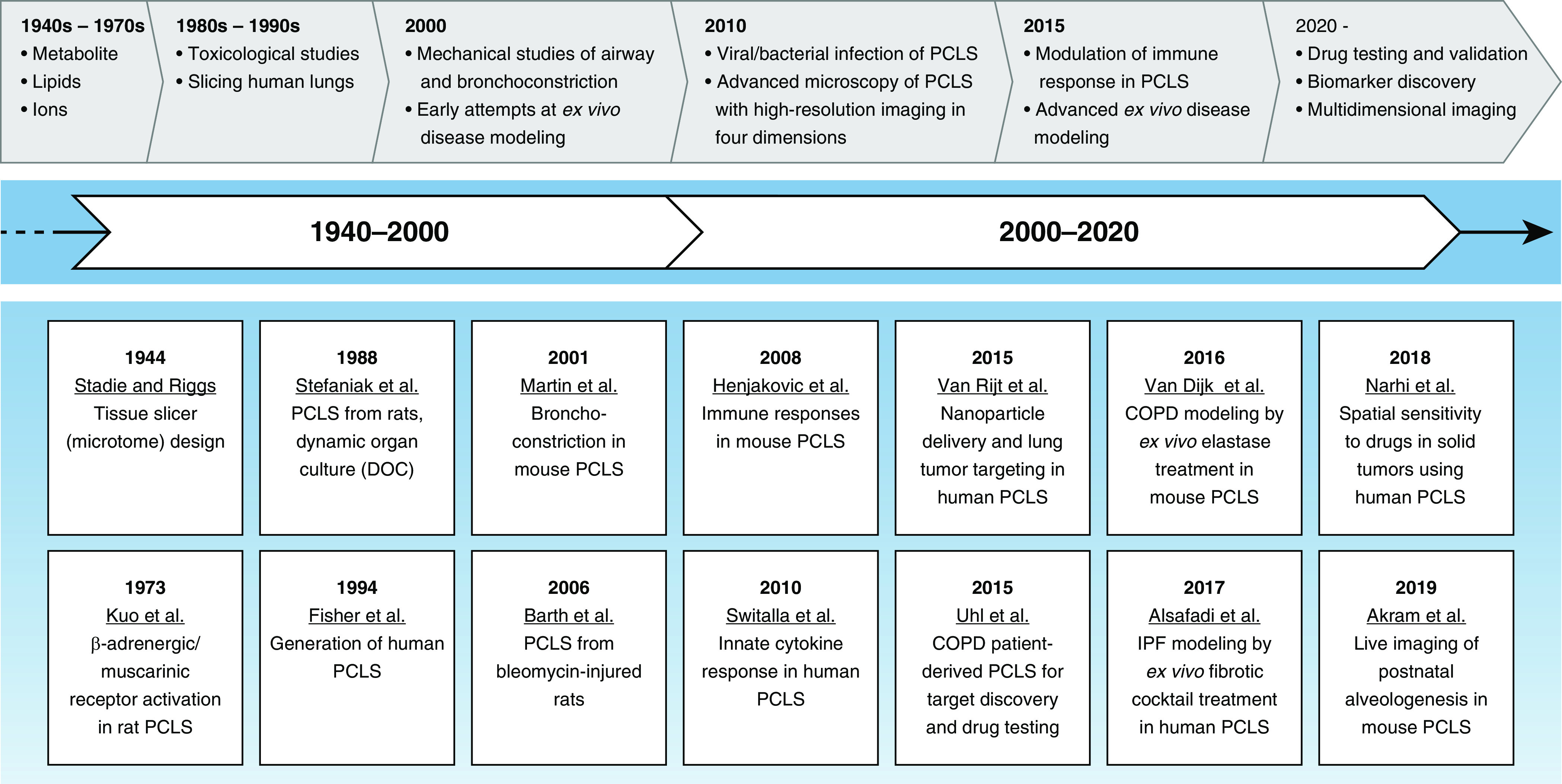Figure 1.

Development of precision-cut lung slices (PCLS) generation, leading to disease modeling and drug discovery. Ex vivo culturing of lung tissue has been performed since the early 1940s, although limited progress was made in the technique for the first two decades. Early studies were limited to short culture times and analyses of metabolites and toxicological studies. Mechanistic studies did not start until the 1970s. Precise and reproducible generation of thin lung slices began at the end of the 1980s, when agar was used to support the three-dimensional structure. The first lung slice from human lungs was generated in the early to mid 1990s. Most recently, lung slices from animal and human tissues have been used to explore in-depth mechanisms of lung diseases. COPD = chronic obstructive pulmonary disease; DOC = dynamic organ culture; IPF = idiopathic pulmonary fibrosis.
